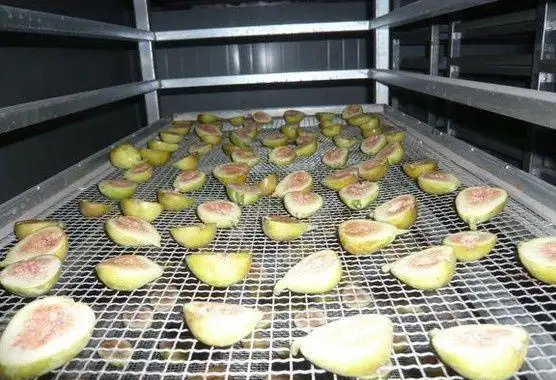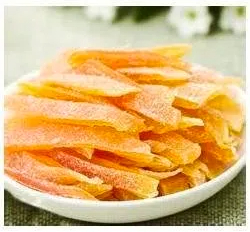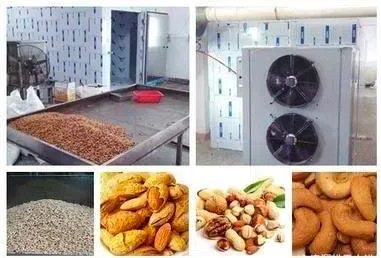
Content Menu
● Understanding Heat Pump Dryers
● Advantages of Heat Pump Dryers
● Comparing Heat Pump and Vented Dryers
● Practical Applications in Food Drying
● How Heat Pump Dryers Work
>> Benefits for Food Manufacturers
● Considerations When Choosing a Dryer
● Maintenance Tips for Heat Pump Dryers
● Conclusion
● Frequently Asked Questions
>> 1. What is the primary difference between a heat pump dryer and a vented dryer?
>> 2. Are heat pump dryers more expensive than vented dryers?
>> 3. Can I use a heat pump dryer for food drying?
>> 4. How often do I need to clean a heat pump dryer?
>> 5. Do heat pump dryers take longer to dry clothes?
In recent years, the demand for energy-efficient appliances has surged, particularly in the realm of laundry equipment. Among the various options available, heat pump dryers have emerged as a popular choice due to their energy-saving capabilities. This article explores the advantages of heat pump dryers over traditional vented dryers, particularly within the context of food drying applications, and provides insights into their operational efficiency, environmental impact, and practical use cases.

Understanding Heat Pump Dryers
Heat pump dryers utilize a closed-loop system to dry clothes or food products. Unlike traditional vented dryers, which expel hot air outside, heat pump dryers recycle the air within the machine. They draw in cool air, heat it using a refrigerant system, and then circulate this heated air through the drying drum. As the air absorbs moisture from the items being dried, it becomes humid and is then cooled down in an evaporator. This cooling process condenses the moisture into water, which is either collected in a reservoir or drained away. The dry air is reheated and sent back into the drum to continue the drying cycle.
Advantages of Heat Pump Dryers
One of the most significant benefits of heat pump dryers is their energy efficiency. They consume significantly less energy compared to vented dryers because they do not need to generate new hot air continuously. Instead, they reuse the air already heated in the system. This closed-loop mechanism can lead to energy savings of up to 68% compared to traditional dryers.
Heat pump dryers operate at lower temperatures than vented dryers, making them gentler on fabrics. This is particularly important for delicate items that may be damaged by high heat. By reducing wear and tear on clothing or food products, heat pump dryers help maintain quality over time.
With growing concerns about climate change and energy consumption, choosing energy-efficient appliances can contribute positively to environmental sustainability. Heat pump dryers reduce overall electricity consumption, which can lead to lower carbon emissions associated with power generation.
Comparing Heat Pump and Vented Dryers
| Feature | Heat Pump Dryer | Vented Dryer |
| Energy Consumption | Low (recycles hot air) | High (expels hot air) |
| Drying Temperature | Low (gentler on fabrics) | High (can damage delicate items) |
| Installation | Flexible (no external vent needed) | Requires external vent installation |
| Drying Time | Longer drying cycles | Faster drying cycles |
| Maintenance | Requires regular cleaning of filters | Needs vent cleaning to prevent lint buildup |
Practical Applications in Food Drying
Heat pump technology is not limited to clothing; it can also be effectively applied in food drying processes. Food dehydrators that utilize heat pump technology are becoming increasingly popular among manufacturers and consumers alike for several reasons:
- Preservation of Nutrients: The lower drying temperatures used by heat pump systems help preserve vitamins and minerals in food products better than high-temperature methods.
- Quality Control: By controlling humidity levels and temperature more precisely, heat pump food dehydrators can produce higher quality dried foods with better texture and flavor.
- Energy Savings: Similar to their use in laundry applications, heat pump food dehydrators consume less energy than conventional dehydrators that rely on high heat.
How Heat Pump Dryers Work
Understanding how heat pump dryers function can provide insight into their efficiency. The process begins with a fan drawing in ambient air from the surrounding environment. This air passes through an evaporator coil where it is cooled down by a refrigerant that absorbs moisture from the air.
Once the moisture is extracted from the air, it is condensed into water droplets that are collected or drained away. The now-dry air is then heated again using a compressor before being circulated back into the drum where clothes or food items are placed. This cycle continues until the desired dryness level is achieved.
Benefits for Food Manufacturers
For food manufacturers looking to dry fruits, vegetables, herbs, or meats, heat pump technology offers several advantages:
- Consistent Results: The ability to maintain specific temperatures ensures that all items are dried evenly without overheating any portion.
- Reduced Energy Costs: As energy costs continue to rise globally, businesses utilizing heat pump technology can significantly reduce operational expenses while maximizing output.
- Versatility: Heat pump dryers can be used for various types of food products, making them an excellent investment for businesses looking to diversify their offerings.

Considerations When Choosing a Dryer
When selecting between a heat pump dryer and a vented dryer for food or clothing drying needs, several factors should be taken into account:
- Space Availability: Since heat pump dryers do not require external venting, they can be installed in various locations without concern for vent placement.
- Initial Cost vs. Long-Term Savings: While heat pump dryers typically have a higher upfront cost compared to vented models, their energy efficiency can result in significant savings on utility bills over time.
- Drying Needs: For users who prioritize speed over efficiency or have less delicate items to dry, a vented dryer may be more suitable. However, for those looking for an eco-friendly option that protects fabric integrity or preserves food quality, a heat pump dryer is ideal.
Maintenance Tips for Heat Pump Dryers
To ensure optimal performance and longevity of your heat pump dryer:
- Regularly Clean Filters: Clogged filters can hinder airflow and reduce efficiency. Cleaning them regularly will help maintain performance.
- Check Drainage System: If your model includes a drainage system for condensed water, ensure it is clear and functioning correctly to prevent overflow issues.
- Inspect Seals and Gaskets: Ensure that door seals are intact to avoid loss of hot air during operation.
- Schedule Professional Servicing: Consider having your dryer serviced by a professional annually to check for any potential issues that could arise over time.
Conclusion
In conclusion, heat pump dryers represent a significant advancement in energy-efficient drying technology compared to traditional vented dryers. Their ability to recycle hot air leads to substantial energy savings while providing gentler care for fabrics and improved food preservation capabilities. As consumers become more environmentally conscious and seek ways to reduce their carbon footprint, heat pump technology will likely continue gaining traction across various applications.

Frequently Asked Questions
1. What is the primary difference between a heat pump dryer and a vented dryer?
- The main difference lies in how they handle air; heat pump dryers recycle hot air internally while vented dryers expel it outside.
2. Are heat pump dryers more expensive than vented dryers?
- Yes, heat pump dryers generally have a higher initial purchase cost but offer long-term savings on energy bills.
3. Can I use a heat pump dryer for food drying?
- Absolutely! Heat pump technology is effective for both clothing and food drying applications.
4. How often do I need to clean a heat pump dryer?
- Regular cleaning of filters is necessary to maintain efficiency; however, they require less frequent maintenance than vented models.
5. Do heat pump dryers take longer to dry clothes?
- Yes, they typically have longer drying cycles compared to vented dryers due to their lower operating temperatures.












